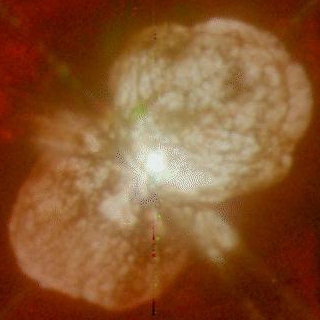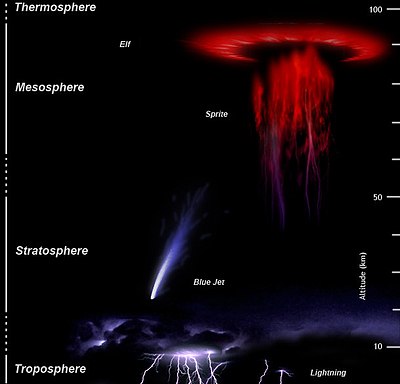Mr. Tea
Let's Talk About Ceps
In no particular order (although I'm especially fond of the last one):
Part 1
1. Japanese hornets
They're two inches long and have a three-inch wingspan. They can fly at 25 mph and cover 60 miles in a day. Each year in Japan alone, they cause more human deaths than all other wild animals combined. When attacking a beehive, each hornet can kill up to 40 bees per minute and just a handful of hornets can wipe out a hive of 30,000 bees in a few hours. However, Japanese honey bees have a badass defence mechanism; they mob the attacking hornets en masse while vibrating their flight muscles madly, killing the hornet by a combination of overheating and suffocation.

Before launching an attack on a hive, each hornet adopts a full lotus position for a day and a night with a miniature naked katana blade resting across its folded middle legs, medidating upon War. Probably.
2. The Oklo Natural Nuclear Reactor
A uranium mine in Oklo, Gabon, was found in 1972 to contain deposits of certain rare heavy elements in isotope ratios completely different from those found anywhere else, as well as uranium that was unusually poor in U-235 (the fissionable isotope used in nuclear reactors). It was soon realised that these results were consistent with uranium seams in the mine having acted as natural nuclear reactors some two billion years ago; the fissionable uranium had been depleted as it was used up in self-sustaining reactions that produced the other rare isotopes as daughter nuclei.
Pockets of xenon gas trapped in the rocks allowed scientists to estimate that the reactors (around a dozen of them) had run for around a million years, running eight 'cycles' a day during which the fission reaction occurred for about half an hour using water as a moderator, which is vital to sustain the reaction; the energy released heated the water which then boiled away, stopping the reaction for 2.5 hours until enough water had accumulated for the reaction to start again. Highly radioactive fission products had seeped only a few centimetres from the reaction sites in a couple of billion years, which proponents of nuclear power presented as counterarguments to anti-nuclear campaigners who object to the technology on the grounds that subterranean waste storage is too unsafe.
http://geology.about.com/od/geophysics/a/aaoklo.htm

3. Cannibal Shark Foeti
Many sharks, unlike most fish, give birth to live young. The grey nurse shark is so badass that the young cannibalise each other in utero before they're even born. This naturally provides a selection pressure to ensure only the one or two most badass sharks of each original brood are even born in the first place.
http://en.wikipedia.org/wiki/Cannibalism_(zoology)#Intrauterine_cannibalism
Alternatively, a great name for a grindcore band.
4. Eta Carinae, the real-life Death Star
This huge star, some 8,000 light years from our solar system, is seriously badass. At around 100 solar masses, it's one of the largest known stars - although recent observations have led some astronomers to think it may be a binary star in close orbit. Either way, the star's total power output is about five million times that of our sun, since the rate of nuclear fusion in a star's core depends very sensitively on its mass.
The star is notable for its huge two-lobed nebula, consisting of ionised gas emitted by the star from its poles and constrained into the shape of a peanut shell by the star's enormous* magnetic field. Most badass of all, the star's intense radiation impacting on this gas energises it, causing it to re-emit this energy in the form of ultraviolet radiation in such narrow wavelength bands that it is probably the result of natural laser activity within the nebula. Stellar-powered lasers in the infrared and microwave regions of the spectrum have been observed before, but Eta Carinae is the first system to exhibit laser activity at energies this high or at anything like the intensity.

http://apod.nasa.gov/apod/ap971129.html
*well, relatively enormous: see below
5. The Bloop
This one goes out to all you Cthulhu lovers out there: The Bloop was an extremely powerful, low-frequency sound detected in the South Pacific several times in 1997 by American submarines. It appears to be biological in origin, in that it doesn't correspond either to any conceivable man-made source or any known geological or hydrological phenomenon, but is far louder than any other known noise made by a living creature, and could be detected over 5,000 miles from its source. You can hear it (sped up, to bring it into the human hearing range) on the Wiki page.
'Coincidentally', the sound's reconstructed source is close to the location of H. P. Lovecraft's sunken alien city of R'lyeh...
Part 1
1. Japanese hornets
They're two inches long and have a three-inch wingspan. They can fly at 25 mph and cover 60 miles in a day. Each year in Japan alone, they cause more human deaths than all other wild animals combined. When attacking a beehive, each hornet can kill up to 40 bees per minute and just a handful of hornets can wipe out a hive of 30,000 bees in a few hours. However, Japanese honey bees have a badass defence mechanism; they mob the attacking hornets en masse while vibrating their flight muscles madly, killing the hornet by a combination of overheating and suffocation.

Before launching an attack on a hive, each hornet adopts a full lotus position for a day and a night with a miniature naked katana blade resting across its folded middle legs, medidating upon War. Probably.
2. The Oklo Natural Nuclear Reactor
A uranium mine in Oklo, Gabon, was found in 1972 to contain deposits of certain rare heavy elements in isotope ratios completely different from those found anywhere else, as well as uranium that was unusually poor in U-235 (the fissionable isotope used in nuclear reactors). It was soon realised that these results were consistent with uranium seams in the mine having acted as natural nuclear reactors some two billion years ago; the fissionable uranium had been depleted as it was used up in self-sustaining reactions that produced the other rare isotopes as daughter nuclei.
Pockets of xenon gas trapped in the rocks allowed scientists to estimate that the reactors (around a dozen of them) had run for around a million years, running eight 'cycles' a day during which the fission reaction occurred for about half an hour using water as a moderator, which is vital to sustain the reaction; the energy released heated the water which then boiled away, stopping the reaction for 2.5 hours until enough water had accumulated for the reaction to start again. Highly radioactive fission products had seeped only a few centimetres from the reaction sites in a couple of billion years, which proponents of nuclear power presented as counterarguments to anti-nuclear campaigners who object to the technology on the grounds that subterranean waste storage is too unsafe.
http://geology.about.com/od/geophysics/a/aaoklo.htm

3. Cannibal Shark Foeti
Many sharks, unlike most fish, give birth to live young. The grey nurse shark is so badass that the young cannibalise each other in utero before they're even born. This naturally provides a selection pressure to ensure only the one or two most badass sharks of each original brood are even born in the first place.
http://en.wikipedia.org/wiki/Cannibalism_(zoology)#Intrauterine_cannibalism
Alternatively, a great name for a grindcore band.
4. Eta Carinae, the real-life Death Star
This huge star, some 8,000 light years from our solar system, is seriously badass. At around 100 solar masses, it's one of the largest known stars - although recent observations have led some astronomers to think it may be a binary star in close orbit. Either way, the star's total power output is about five million times that of our sun, since the rate of nuclear fusion in a star's core depends very sensitively on its mass.
The star is notable for its huge two-lobed nebula, consisting of ionised gas emitted by the star from its poles and constrained into the shape of a peanut shell by the star's enormous* magnetic field. Most badass of all, the star's intense radiation impacting on this gas energises it, causing it to re-emit this energy in the form of ultraviolet radiation in such narrow wavelength bands that it is probably the result of natural laser activity within the nebula. Stellar-powered lasers in the infrared and microwave regions of the spectrum have been observed before, but Eta Carinae is the first system to exhibit laser activity at energies this high or at anything like the intensity.

http://apod.nasa.gov/apod/ap971129.html
*well, relatively enormous: see below
5. The Bloop
This one goes out to all you Cthulhu lovers out there: The Bloop was an extremely powerful, low-frequency sound detected in the South Pacific several times in 1997 by American submarines. It appears to be biological in origin, in that it doesn't correspond either to any conceivable man-made source or any known geological or hydrological phenomenon, but is far louder than any other known noise made by a living creature, and could be detected over 5,000 miles from its source. You can hear it (sped up, to bring it into the human hearing range) on the Wiki page.
'Coincidentally', the sound's reconstructed source is close to the location of H. P. Lovecraft's sunken alien city of R'lyeh...
Last edited:






